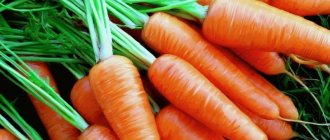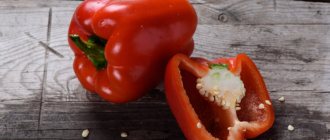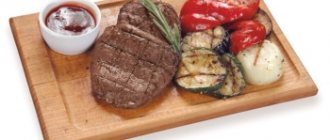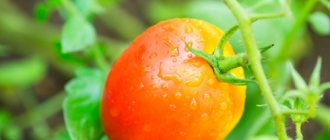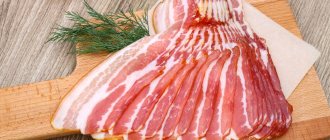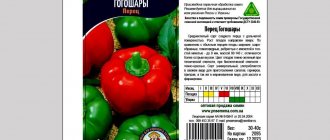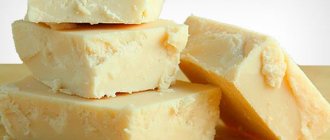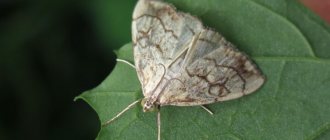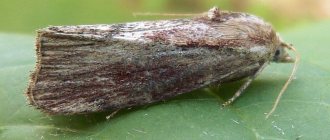Choosing a red onion variety is not a problem for experienced gardeners. But beginners may have questions about the choice. And this is because there are currently a great many varieties of red onions. Red onion, just like regular onion, can be spicy (less often), semi-sharp and sweet. And yet, varieties of red onions are distinguished by the original beautiful color of their scales, which can be any shade from red-violet to red-brown. The rich vitamin composition of red onions is especially valued. Later in the article, we will consider onion varieties in more detail. Go?
Description of the species
Red onion is a type of onion . Its main characteristics are the unusual color of the husk and a sweeter taste than regular onions. The flesh remains white.
The turnips are small in size, soft, taste juicy and tender . There is no characteristic bitterness. Depending on the variety, the vegetable can be sweeter or less.
The homeland of red onions is Central Asia . Later, employees of the Nikitsky Botanical Garden in Crimea made a great contribution to the emergence of new varieties with excellent taste characteristics.
Varieties
Most plants are found in the middle climate zone.
They are divided into the following groups:
- sweet - suitable for eating even for children (from an adequate age);
- semi-sharp;
- spicy - have the sharpest taste.
Let's look at popular varieties of red onions with descriptions and photos.
Crimson Ball
Early maturing crop: harvested 80–95 days after sowing . Dark purple vegetables with a regular round shape are formed in 1 season.
The average weight of the bulbs is 80–90 g. The taste is semi-sharp.
The shelf life of the crop is short : only 4 months.
Greatful Red F1
The ripening time of the hybrid is average: 125 days from the date of sowing . The marketable yield is high: 276–650 centners are harvested from 1 hectare. In the Volgograd region, 850 c/ha were obtained. The crop is recommended for cultivation in the Lower Volga region.
The bulbs are large, dark red, weighing up to 120 g . The taste is semi-sharp and juicy.
Important! After ripening, the vegetables ripen completely.
The hybrid is resistant to fusarium rot . It has a high shelf life (stored until March).
Campillo F1
The hybrid produces bulbs that are round in shape, pale purple in color, and have a mild flavor . It grows both in the south and in central Russia.
The ripening period is medium-late (up to 150 days after planting).
Resistant to pink rot and fusarium . The harvest is stored without loss of taste until the next season.
Retro
The variety is late-ripening: 150 days pass after sowing before harvesting . Recommended for the Central region. The bulbs are dark red with white juicy pulp. They taste sweet. Up to 280 centners of vegetables are harvested from 1 hectare.
They are stored for only 3-4 months. Retro is resistant to fusarium and onion fly .
Yucont
Early variety: 85 days pass from the day of sowing to full ripening . Suitable for cultivation in the following regions:
- Central;
- Central Black Earth;
- Volgo-Vyatsky;
- Ural;
- West Siberian.
The bulbs are round, red with purple outlines . The taste is spicy.
In the annual crop, up to 210 c/ha of crops are harvested in the Central region, up to 120 c/ha in the Central Chernozem region, 212 c/ha in the Ural region, and up to 300 c/ha in the West Siberian region. Vegetables can be stored for up to 8 months .
Important! When grown from seeds, onions are harvested after a year, from sets - after 2.
The variety is resistant to fungal diseases.
Yalta
The most popular variety of red onion, as it is suitable for cultivation in all regions . Ripening time is average: up to 130 days from the date of sowing.
The bulbs are wide red . The pulp is juicy and white, sweet in taste.
The yield of Yalta onions is high: up to 500 centners are collected from 1 hectare. The crop is susceptible to onion fly attacks .
Chemical composition
Red onion contains the following beneficial elements::
- boron;
- cellulose;
- sulfur;
- iron;
- iodine;
- calcium;
- potassium;
- magnesium;
- sodium
- fluorine;
- chromium;
- chlorine.
The vegetable has low calorie content : 40 kcal per 100 g.
The pulp and juice contain anthocyanins - coloring substances, flavonoids that reduce inflammation and prevent cell damage due to oxidation in the intestines.
Onions contain phytoncides - substances that have a detrimental effect on pathogenic fungi and microorganisms.
Characteristics of the bulb
The whole bulb, except for the roots, is used for food.
Important! Some varieties have multi-layered feathers and reach a height of 1.5 m.
Depending on the variety, turnips can be wide, round or oval . Consists of numerous layers of juicy scales. The color changes from soft red to purple.
Main characteristics
As experts say, the birthplace of red onions is Central Asia; it is considered a variety of ordinary onions.
Varieties of red onions may differ from each other in their characteristics - size, shade of color of the husk and pulp.
Growing Exhibition onions through seedlings and planting seeds directly in open ground
The red type of onion is almost never too spicy
.
Most often, a slight spiciness is felt in its taste. There are sweet varieties of red onions that are eaten fresh
. There is also red salad onion, which is used for preparing various types of salads, for preservation, especially for winter preparations using marinades.
Moreover, the taste of this type of onion depends on the region in which it is grown.
, from compliance with agrotechnical measures when growing this vegetable crop.
Important!
Any variety of red onion can be grown from seed.
Advantages and disadvantages
Main benefits of red onion:
- high content of useful substances;
- many varieties are suitable for cultivation in almost any region;
- mild taste without bitterness;
- high yield and keeping quality of some varieties.
Vegetables are demanding in terms of harvest time and storage conditions.
Onions are not eaten when:
- kidney diseases;
- disorders of the liver;
- inflammation of the intestines;
- stomach ulcer;
- individual intolerance;
- pregnancy;
- breastfeeding.
Differences from other types of onions
The main feature of red onion is the color of its peel . It comes in both soft pink and rich dark shades. Almost all varieties have excellent taste, juicy, tender and sweet.
Some plants (for example, Greatful Red) have increased shelf life and resistance to transportation, while others (Campillo) have strong immunity to diseases.
Beneficial properties of red onion:
- Anti-inflammatory - helps the body fight inflammation and infections.
- Antiseptic - disinfects the skin, kills pathogenic bacteria.
- Secretory - promotes the production of acid in the stomach.
- Anthelmintic - makes the environment unfavorable for parasites.
The vegetable improves blood circulation and dilates blood vessels . Thanks to its high sulfur content, it improves the condition of skin, hair and nails.
Take note:
Is it possible to fry red onions instead of white?
Best recipes: how to pickle red onions
"Alpha"
A fairly strong variety in terms of resistance to viruses and various diseases, which cannot be said about resistance to frost. The vegetable ripens early and quite quickly: it can be planted in May, and a stable harvest can be harvested after 70 days. Therefore, it is considered an early ripening variety. External characteristics:
- round form;
- golden crust in five layers;
- weight up to 120 g;
- leaf height – up to 30 cm.
- The size of the set is small, which is why it can freeze quickly.
Has a pungent taste, ideal for canning and raw
. They need to be planted at intervals of 10 cm in rows, the distance between which is no more than 30 cm, as for all other varieties of onion sets.
Features of planting and growing
The culture is demanding in terms of light and humidity . The richest harvest of large bulbs ripens in sunny, well-moistened areas.
Is it possible to plant on the head before winter?
Although red onions prefer warm climates, some varieties (for example, Robin, Black Prince) are planted before winter .
Sowing time depends on the region : in the southern regions it is November, and in the northern regions it is September. Suitable ground temperature does not exceed +5°C.
Winter planting technology:
- Choose an open sunny area with well-drained soil. The earth is dug up with humus, mineral fertilizers, and ash.
- As soon as the soil settles, the area is leveled with a rake, furrows are made 6 cm deep. The distance between them is 20 cm.
- The sets are planted 8 cm apart.
- The soil is sprinkled and compacted.
- Water only after 10 days.
- As soon as frost sets in, the ground is mulched with straw.
Some gardeners plant several varieties at once to choose the one they like and prepare it for next year. This procedure will help determine the most winter-hardy onions.
Preparing for landing
Planting material is pre-soaked in a weak solution of potassium permanganate (pink) for 30 minutes. This will destroy pathogens. To speed up germination, the seeds are treated with a growth stimulant and placed in a canvas bag.
Soil requirements
The site for planting is chosen to be well-lit, with fertile soil (pH 7). If the soil is acidic, add dolomite flour.
Attention! The crop grows best in the place where cabbage was before.
The following fertilizers are applied for digging (per 10 liters of water):
- urea - 2 tbsp. l.;
- rotted chicken droppings - 100 g;
- manure infusion - 1 l.
Dates, scheme and rules of planting
The prepared material is planted in open ground 2 days after treatment , when constant warm weather has established (+22...+23°C) and the soil has warmed up well.
Planting depth : 1.5 cm. Pattern: 3x10 cm.
The seedlings are planted in furrows 5 cm apart . The distance between furrows is 24 cm.
Features of cultivation
In northern latitudes, early ripening varieties are cultivated . For planting, use seedlings or seedlings. These vegetables have a bitter taste.
Onions with medium ripening periods are suitable for the central strip . Seedlings are used as planting material.
In the southern climate, on fertile soil, all varieties grow . The taste of this onion is sweet or semi-sweet.
Nuances of care
Caring for red onions is standard . Watering is carried out as the top layer of soil dries, fertilizing - 2 times per season.
Advice! For long-term storage of the crop, the feathers of the plants are not trimmed.
Watering mode
Red onions are watered once every 7 days, at the rate of 5–10 liters of water per 1 m2 . At the same time, pay attention to weather conditions. If the summer is dry and the feathers begin to dry out, the frequency of irrigation is increased to 2 times a week. In rainy weather, watering is stopped.
In July, when turnips begin to ripen , the crop is moistened once every 14 days.
Watering is stopped completely 2 weeks before harvest : the vegetables are allowed to dry so that they do not rot during storage.
Loosening and weeding
Loosen the soil shallowly until the stems close together.
Weeding is carried out regularly : weeds take nutrients from plants.
Top dressing
Fertilize the crop twice per season:
- When forming bulbs, organic compounds are used. Prepare a solution of chicken manure (1:10) or liquid mullein (1:5).
- At the end of June, a composition of 10 liters of water, 60 g of superphosphate, 30 g of sodium chloride is applied to the root. The resulting volume is enough for 2 m2.
Disease and pest control
Most often, red onions are susceptible to a fungal disease - fusarium . It manifests itself as softening of the bottom of the head and death of the roots. The leaves turn yellow and the plant dies. Affected bushes cannot be treated; they are dug up and burned. For prevention, seedlings are soaked in fungicide for 30 minutes before planting.
In dry summers, plants are attacked by onion fly . She appears as soon as the dandelions begin to bloom. Insect larvae penetrate the vegetable through the bottom or base of the leaves, eating it from the inside. Tobacco is used to control the pest. It is mixed with water at the rate of 250 g per 10 liters, left for 2 days. The resulting product is sprayed onto the plants. For 1 m2 you will need 1 liter of composition.
Late onion varieties
Late onions are onions with a ripening period of more than 120-130 days. Late onion varieties are grown through seedlings, in the southern regions by planting sets in open ground. Late varieties in demand:
Bamberger
A variety of German selection, resistant to the vagaries of weather. The heads are light, elongated, small (up to 60 g). The purpose of the variety is salad.
Volzhanin
Round turnips up to 130 g, golden husk, white flesh. Onions have a pungent taste and moderate bitterness. The long-term storage variety is famous for its productivity.
Globo
See the description of this variety above.
Danilovsky 301
The bulbs are round-flat, weighing 80-120 g. Productivity is high, shelf life is 4 months. The taste is juicy, without bitterness.
Kaba
The shape of the turnip is round, flat, weighing 120-130 g. Ripening time is up to 140 days, the taste is pleasant and spicy. It does not require care, the yield is stable.
Serra Blanca F1
See the description of this variety above.
Stardust
The mass of the bulbs reaches 400 g, the onions are large and grow slowly. The color of the scales and husks is white, the taste is pleasant, moderately spicy. Characterized by long-term storage of bulbs.
Strigunovsky
The onion has an elongated shape towards the bottom, the mass of the bulbs is 60-80 g. The upper shell of the turnip is pinkish, snow-white in cross section. It has an excellent taste, no bitterness.
Red Yakut
See the description of this variety above.
Exhibition
See the description of this variety above.
Harvest and storage
Red onions are demanding in terms of harvesting time and storage conditions. It is much more difficult to store than ordinary bulbs .
Vegetables ripen in late July - early August . As soon as the neck becomes dry and most of the feathers turn yellow and dry, the onion is ready.
Attention! Harvesting is carried out in warm sunny weather.
Store red onions in boxes or on special racks . The humidity in the room should be about 65%, the temperature should not exceed +19°C.
Varieties of this variety have high keeping quality . Some (Grateful Red, Campillo, Yucont) are stored until the new season.
Classification of onions
Onions are classified according to several criteria:
- color - yellow, white, red, brown, purple;
- shape - flat, rounded-flat, rounded, oval, elongated-oval, long;
- taste - sweet, bitter (spicy);
- ripening period - early, mid-ripening, late.
Onions are grown in two ways: by sowing seeds into seedlings, followed by planting them in the ground, or using small baby bulbs called sets. The vegetative part of onions (feather) is edible, used for fresh food, as well as for cooking.
Reviews
Red onions are popular among farmers in various regions. It is grown for both food and cosmetics .
Anna, Krasnodar region, Yeisk : “I plant Yalta onions in the garden along with carrots. The harvest is strong and lasts a long time. I use it for making salads and preserves.”
Victor, Moscow region, Krasnoarmeysk : “I have been growing the Red Baron variety for 2 years now. The turnips turn out to be large and dense. Great for barbecue and fish. The productivity is very high, and the crop is unpretentious in maintenance.”
Daria, Vladimir region, Alexandrov : “I use red onions not only in cooking, but also for preparing various cosmetics: hair masks, decoctions. The smell is not as strong as the white one. The effect is amazing."
Winter varieties of onion sets
Onion varieties with high immunity and resistance to viral diseases are planted late in the fall. Winter onion varieties ripen 30 days earlier than onions planted in spring. The bulbs are larger and do not require watering until mid-May. The best winter varieties of sweet onions:
Arzamas
The shape of the bulbs is round, the turnip weighs up to 70 g. The husk is brown, the inner scales are white. The species is mid-season, the yield is high. The taste of the variety does not contain bitterness.
Hercules F1
See the description of this variety above.
Danilovsky 301
See the description of this variety above.
Winter
Early variety, weight 90-100 g, golden color. The pulp is white, crispy, without bitterness. Productivity is high, harvest ripening in mid-July.
Keep Well
A variety loved by gardeners for long-term storage without loss of quality. The bulbs are round, flattened, weighing up to 100 g. The husk is golden, the taste is without bitterness.
Radar
Late variety, stable and high yield. The variety is frost-resistant, the weight of the bulbs is up to 200 g, the color is white. The taste is high.
Red Baron
See the description of this variety above.
Centurion F1
See the description of this variety above.
"Red Baron"
This is a fairly early variety of onion set that tolerates cold spring well. So, already at the end of May you will be able to collect vegetables. It is necessary to constantly water and loosen the soil. Good care and mineral-rich soil will bring you a yield of up to 3 kg per square meter.
A true keeper of vitamin C, Red Baron has made its mark in the kitchen, especially in salads. Chefs prefer this variety for its semi-sharp taste and shelf life. It is dark red in color, round in shape, moderately juicy and dense inside.
Onion sets "Red Baron", the description of the variety speaks of its high productivity, practicality and usefulness, can be planted in the garden of mid-latitudes.
"Rumba"
The fairly large, round bulbs weighing between 100 and 120 g have a brown husk that covers a white, juicy interior with a tangy taste. Planting is done in May in fertilized soil and awaits the month of July, when it will be possible to harvest the crop - up to 5 kg per square meter of land. The seedlings tolerate unfavorable weather conditions well. Such qualities are very impressive, thanks to which the Rumba bow has become very popular.
"Roseanne"
This onion variety is early and produces a good harvest three months after planting the set, for which it is highly valued. Steadily produces up to 3 kg per square meter. It is planted in the spring, when the temperature is not lower than 10 °C. During this period, the soil is quite moist, which is what “Roseanne” requires. Autumn planting is possible three weeks before the onset of frost. The vegetable tastes medium spicy, white, dense and juicy inside. The outside of the onion is covered with pink husk.
"Rosanna" is included in the list of popular varieties of onion sets due to its size. The round onion is quite large, with an average diameter of 8 cm. Weight ranges from 120 g.
"Centurion"
Outwardly it differs from others, because it has an egg shape. The color of the husk is light yellow. It tastes very spicy. Its main feature is productivity. "Centurion", along with "Hercules", is capable of bringing 8 kg of onions per square meter.
According to its characteristics, among gardeners, this variety is considered to be of very high quality and reliable. Three months after planting, you can harvest a good harvest. The product should be stored in a cool place, but with good air circulation.
"Corrado"
Onion sets “Corrado” are very popular, the description of the variety can be reduced to several important advantages:
- stored for a whole year, until the next harvest;
- early variety - ripens from 73 to 93 days;
- gives a stable large harvest.
Long-term storage is achieved thanks to the very dense double husk. It is important to store in a room with good air circulation at a temperature of at least 15 °C. The color is golden and brown, the onion weighs up to 130 g, and the taste is semi-sharp.
"Alvina"
This variety ripens in about three months and is therefore called mid-ripening. "Alvina" produces a very good harvest. Planted in the ground in May to a depth of 4 cm. External distinctive features:
- ellipse shape;
- weight 70 – 150 g;
- purple husk;
- The inside of the bulb is white with a purple color.
The taste of the vegetable is not very spicy, so it is preferable to eat it raw. It has good juiciness. The shelf life of this onion is 6-7 months.
Did you know? The Alvina variety contains a large amount of useful substances, including quarcetin. Its peculiarity is that this supplement can prevent the appearance of tumors.
